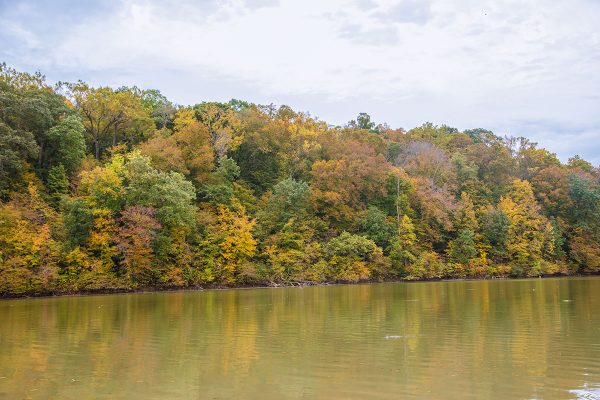Indiana's rural forests, state parks, state recreational areas, bike trails, and numerous nature preserves all render the Hoosier state a fantastic venue to witness the changing of the seasons. This handy guide will help you find Indiana's best fall colors!
Indiana's rural forests, state parks, state recreational areas, bike trails, and numerous nature preserves all render the Hoosier state a fantastic venue to witness the changing of the seasons.
As the days grow shorter, the lush green landscapes and dark emerald forest canopies explode into brilliant yellows, oranges, reds, and browns. From Lake Michigan to the Ohio River, hundreds of options exist for witnessing the natural spectacle of fall foliage and connecting with nature one last time before winter sets in. There's even a term for those of us that travel in fall to experience the changing of the leaves - leaf peeping (in Japan, it's called momijigari).
For most of Indiana, the peak color of fall - when the leaves offer the greatest diversity of color - is usually predicated to take place in mid-late October. The area around Mount Vernon and Evansville in Indiana’s ‘toe’ will experience peak foliage color in late October.
The interactive map below lists all of Indiana's state forests, parks, and SRAs:
While the changing of the leaves happens everywhere in the state with trees, arguably the natural forests offer the best retreats into fall. Indiana boasts 28 state parks, 8 reservoirs, 15 state forests, 23 fish and wildlife areas, 1 national forest, and numerous state recreation areas. And if this wasn't enough, Indiana is home to dozens of nature preserves.
This time of year is also a major festival season all over the state. For a full list of festivals, head over to the Visit Indiana Event finder at: https://goo.gl/SGwg2o
 A breakdown of a leaf changing color, courtesy of the USDA Forest Service.
A breakdown of a leaf changing color, courtesy of the USDA Forest Service.
Deciduous leaves change color in fall for several reasons. During the warmer months, most trees send out leaves filled with a green pigment called chlorophyll, which are found in organelles called chloroplasts. The chloroplasts are responsible for all photosynthesis - the process in which they convert light energy from the sun into a usable chemical energy for nutrition. The green absorbs all colors on the light spectrum and reflect back green.
 The leaves slowly change color at first, then more rapidly as the season progresses.
The leaves slowly change color at first, then more rapidly as the season progresses.
The Earth of course, is tilted on its axis and in the northern hemisphere, tips away from the sun in between the Summer and Winter solstices. Therefore, as the days get shorter and relatively colder, the leaf’s veins slowly cease transporting water. As this happens, the chlorophyll gradually is reduced, which exposes other leaf pigments such as carotenoids (yellow and orange) and anthocyanins (red and purple).
Yellow and orange leaves are common in North American hardwood trees including hickory, ash, maple, birch, and cottonwood. Reds and purples are common in maple, oaks, dogwoods, and cherry trees.
Live feed of the changing leaves from Brown County:





